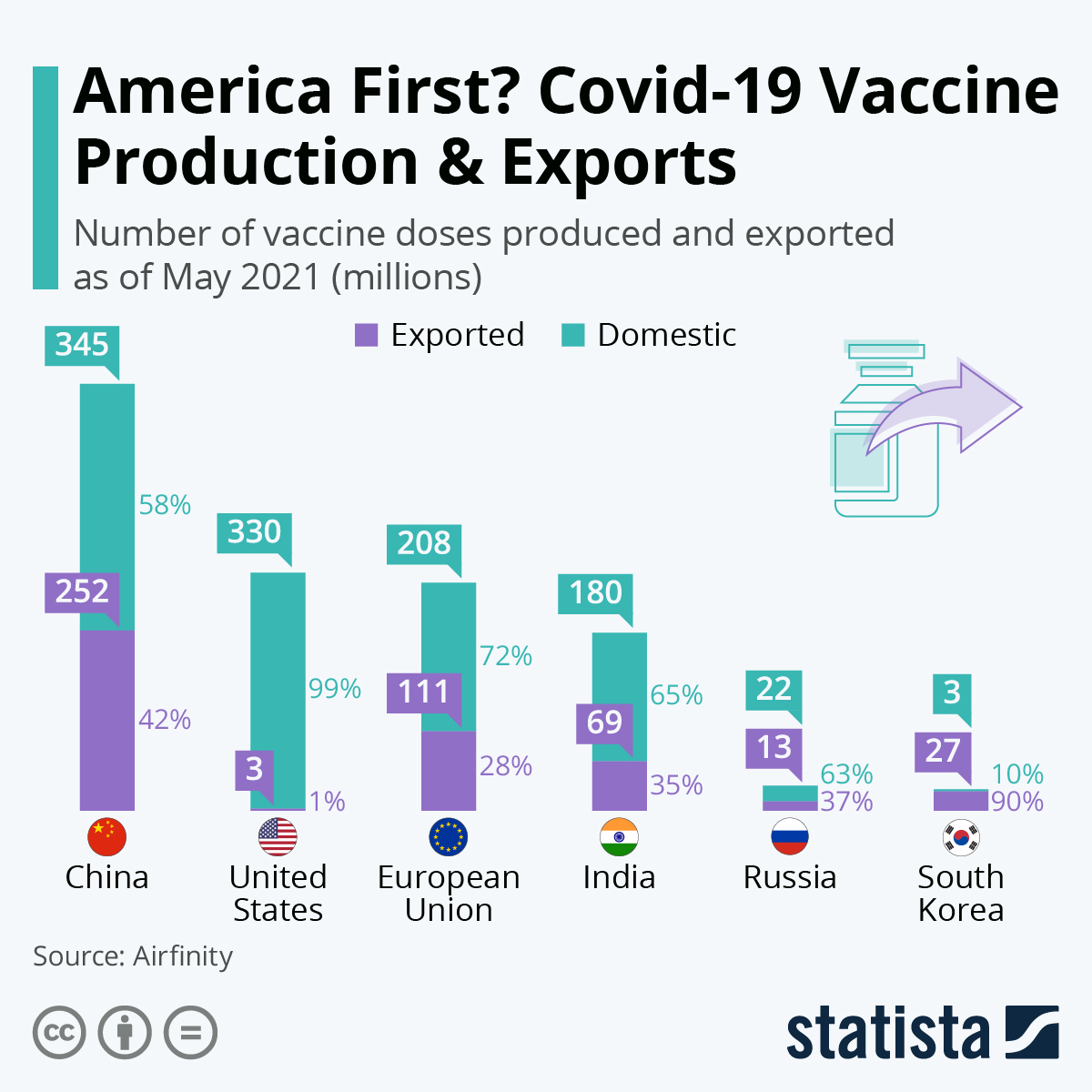

Many countries have implemented phased distribution plans that prioritize those at highest risk of complications such as the elderly and those at high risk of exposure and transmission such as healthcare workers. ^ Vaccination note: Includes Vatican City.^ Vaccination note: Includes Freely Associated States.They are not double-counted in world totals. ^ Data on member states of the European Union are individually listed, but are also summed here for convenience.^ Does not include special administrative regions ( Hong Kong and Macau) or Taiwan.^ Vaccination note: Countries which do not report the number of people who have received at least one dose are not included in the world total.^ Countries which do not report data for a column are not included in that column's world total.May include vaccination of non-citizens, which can push totals beyond 100% of the local population. ^ Percentage of population that has received at least one dose of a COVID-19 vaccine.^ Number of people who have received at least one dose of a COVID-19 vaccine (unless noted otherwise).Saint Helena, Ascension and Tristan da Cunha ĬOVID-19 vaccine distribution by country Note about table in this section: Number and percentage of people who have received at least one dose of a COVID-19 vaccine (unless noted otherwise).

The WHO had set out the target to vaccinate 40% of the population of all countries by the end of 2021 and 70% by mid-2022, but many countries missed the 40% target at the end of 2021. Several companies planned to initially manufacture a vaccine at artificially low pricing, then increase prices for profitability later if annual vaccinations are needed and as countries build stock for future needs. In April 2020, it was reported that the UK agreed to work with 20 other countries and global organizations including France, Germany, and Italy to find a vaccine and to share the results and that UK citizens would not get preferential access to any new COVID‑19 vaccines developed by taxpayer-funded UK universities. Experts emphasize that licensed vaccines should be available and affordable for people at the frontline of healthcare and having the most need. Individual countries producing a vaccine may be persuaded to favor the highest bidder for manufacturing or provide first-service to their own country. ĭuring a pandemic on the rapid timeline and scale of COVID-19 cases in 2020, international organizations like the World Health Organization (WHO) and Coalition for Epidemic Preparedness Innovations (CEPI), vaccine developers, governments, and industry evaluated the distribution of the eventual vaccine(s). While 4.19 million vaccines were then being administered daily, only 22.3 percent of people in low-income countries had received at least a first vaccine by September 2022, according to official reports from national health agencies, which are collated by Our World in Data. See date on map.Īs of 7 May 2023, 13.4 billion COVID-19 vaccine doses have been administered worldwide, with 67.9 percent of the global population having received at least one dose. COVID-19 vaccine doses administered per 100 people by country. Share of population which has received at least one dose of a COVID-19 vaccine relative to a country's total population. Share of population fully vaccinated against COVID-19 relative to a country's total population.


 0 kommentar(er)
0 kommentar(er)
